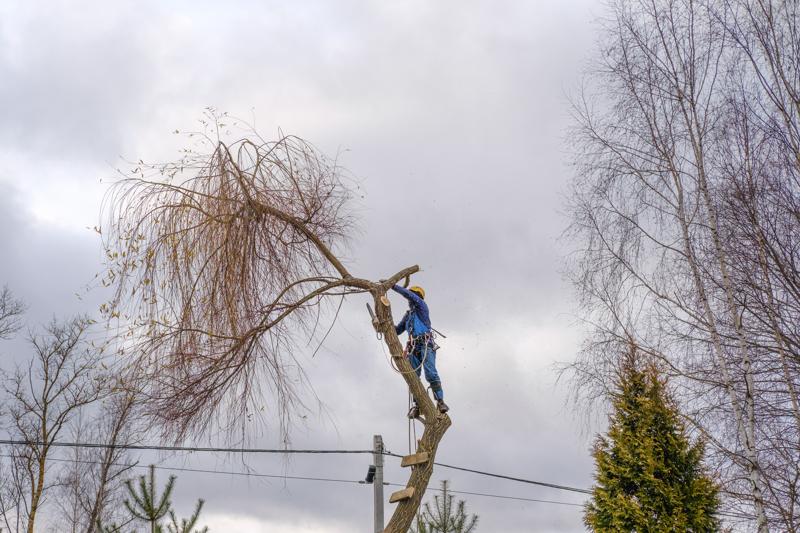An Arborist's Handbook to Tree Cutting Down

Tree removal is a complex and potentially hazardous task. If a tree has died or ill-healthed, or is in danger to fall, the tree may have to be removed in order to avoid damage to the property and to make sure that the tree is safe. How do you know when a tree must be cut down? We’ll take you through the signs to look out at and guide you determine the right time to call in experts.
Dead or Dying Trees
One of the most evident signs that a tree should be removed is if it is dead or dying. Dead trees are without leaves and may appear lifeless. If a tree has no leaves or signs of new growth, it’s probably dead. Additionally, the bark of a dead tree could be cracked, dry or peeling.
Trees that are diseased
Diseased trees may pose a threat to the other plants and trees in the surrounding area. Common signs of disease on trees are the appearance of yellowing leaves, wilted branches, and mushroom growth at the root and the top. If you suspect that your tree may be diseased it is important to have it inspected by a professional arborist.
Leaning Trees
TreesLeaning trees towards one side could be an indication that the root system is failing, and the tree may be at risk of falling. To find out if a tree that is leaning could be a threat, check for cracks or broken areas in the trunk and examine the soil surrounding the base of the tree. If you spot any of these indicators, it’s best to examine the tree by an arborist.
Overhanging Branches
Trees with overhanging branches located close to power lines or buildings can pose a risk to the safety of your property and personal safety. If you have concerns about branches hanging overhanging It is recommended to have the tree evaluated by an arborist to determine whether removal or pruning is required.
FAQs
How can I tell if a tree is dead?
The tree will be considered to be dead if it does not have leaves and no indication of growth. The bark of a dead tree may be dry, cracked or peeling.
What are the signs of a diseased tree?
Common signs of illness on trees include yellowing leaves, wilted branches, and the growth of mushrooms at the bottom of the tree.
Is it safe to remove an entire tree on your own?
Tree removal can be a complicated and dangerous task. It’s best to leave it to professionals to protect yourself and others.
Conclusion
When you’re dealing with tree removal, it’s crucial to be aware of the indicators that indicate that a tree should be cut down. When you’re aware of indications of dying or dead trees, diseased trees, tree leaning, and hanging branches, you can take steps to protect your property as well as those who live around you. If you suspect that a tree on your property requires removal and you are unsure, contact Brisbane Tree Removal Experts for a professional assessment. Our arborists with years of experience have the experience and equipment to meet the tree removal requirements. Do not risk your safety. If you suspect that the tree that is on your property should be removed, call Brisbane Tree Removal Experts today for a professional evaluation. Our arborists are experienced and will provide you with peace of mind which comes from knowing that your property is in safe with us. Call us now at 0485 882 829 to schedule an appointment.





















